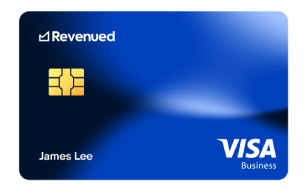How Can I Avoid Business Overdraft Fees?
How Can I Avoid Business Overdraft Fees?
A business overdraft fee is a charge that your company incurs if you attempt to spend more than what is available in your business checking account. The costs vary from $10 to over $30 per transaction.
Bank overdraft fees are more prevalent than people realize, so even the most conscientious business owners may encounter these unsolicited charges from time to time. Banks collect approximately $11 billion every year in overdraft fees, according to a Center for Responsible Lending publication released earlier this year.
However, your business may not be able to absorb these extra costs, especially if your profit margins are thin. Let’s examine these fees in more detail and explore ways that your company can avoid business overdraft fees.
Types of Business Overdraft Fees
There are four different types of overdraft fees that banks can charge to your business:
- Non-sufficient funds fee (NSF) — If a recurring payment post to your account or you try making a purchase without the funds to cover it, the bank can reject the payment. When this happens, the funds will not come out of your account to make the payment; however, the bank will charge an NSF fee for the attempted transaction.
- Overdraft fee — On the other hand, the bank could approve the payment even though the funds are absent. The money is pulled from your account, putting it in the red, and the bank will then charge your account an overdraft fee.
- Extended overdraft fee — Banks expect you to promptly rectify the situation by making a deposit to get your balance back in the black. If you fail to do this for a time (often five days), your bank will charge extended overdraft fees to penalize you for leaving your account overdrawn.
- Overdraft protection fee — Banks offer a service called “overdraft protection,” which transfers money from another account to the checking account to make up shortages. Although these fees are lower than for other business overdrafts, banks charge a fee each time money is transferred.
More About Overdraft Protection
The Board of Governors of the Federal Reserve System approved a rule mandating that banks obtain your permission to provide overdraft protection. Prior to 2010, financial institutions automatically enrolled their customers in overdraft protection programs and charged them fees for the service unless they opted out.
Today, opt-in requirements say you must proactively accept overdraft protection before your bank pays your overdrafts.
When your business accepts overdraft protection, your financial institution covers your bounced check or debit card payment and charges you a fee for this service, usually around $35. Banks use these fees as a revenue source, and they can swiftly accumulate if you are not on top of your finances.
The worst part is your account might be charged a fee every day your balance is negative. Furthermore, fees are not monitored or uniform, making it challenging to predict when charges will be assessed.
Continue reading: What is overdraft protection?
Techniques to Avoid Business Overdraft Fees
You can avoid most overdraft fees your business pays. Here are some techniques to use.
- Utilize accounting software — Overdrafts often occur due to automatic withdrawals or forgotten debit card purchases that were not immediately reconciled. Use accounting software to track these withdrawals before they come out of your account and to adjust your spending accordingly.
- Monitor your balance — Leverage online banking options and mobile apps to check your business account balance regularly. You may customize notifications that will alert you if your balance falls below a predetermined threshold.
- Read the fine print — The overdraft fee structures vary from bank to bank. When setting up your business accounts, scrutinize your bank’s overdraft policy and associated fees, so you are not blindsided with surprise charges.
- Apply for an overdraft line of credit — You may be able to link a line of credit to your checking account that would kick in to cover overdrafts. Interest starts accruing as soon as you utilize the loan and continues until you pay it back. The interest charges quickly add up; however, they are more affordable than other overdraft fees.
Keep in mind that financial institutions often fail to advertise or proactively offer less expensive options like overdraft protection or overdraft lines of credit. Moreover, a credit line may not be an option for businesses that need help the most — fledgling companies with poor or meager credit histories. These small businesses are often the hardest hit by excessive overdraft fees.
Read More: Are Overdraft Fees Tax Deductible for a Business?
RELATED ARTICLES
Revenued Business Flex Line vs Ecommerce Revenue Based Financing
Learn MoreRevenued Flex Line Pricing vs. (MCA): A Comparative Analysis
Learn MoreWhat is My Business’ Credit Utilization Ratio?
Learn MoreWhy is Cash Flow Important to Your Business?
Learn More
Boost your spending power with the Revenued Business Card
Only pay for what you use at gas stations, hotels, supply stores, supermarkets and more.
Take control with the Flex Line
Check your available balance online and request a cash draw with the tap of your finger, anytime.

